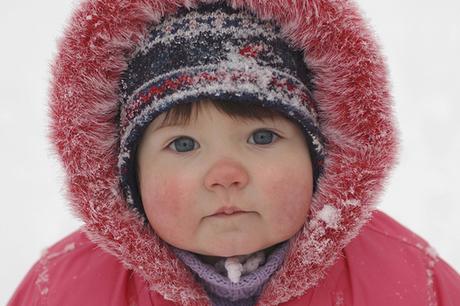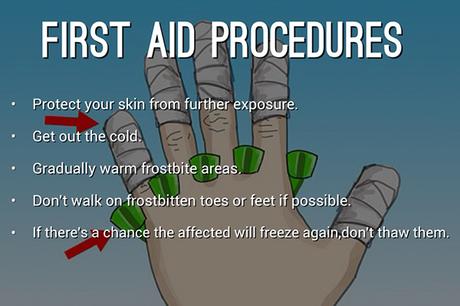
Frostbite Symptoms & Steps to deal with Frostbite:
If you are or have lived in a cold country that experiences snowfall you will be more familiar with the term ‘Frostbite’. Frostbite is a condition when the body’s tissues skin gets exposed to extreme cold temperature and free the tissues damaging the cells in the nerves.
It is not a condition to be taken lightly and the best remedial action is to act fast and treat the patient with warm stuff before the frostbite gets a chance to fully set in. Frost bite if detected early can reduce damage that is usually caused in advanced stages.
Quick symptoms to detect frostbite:
– Pins and needles effect in affected areas
– No sensation in area where earlier pins and needles effect
– Skin becomes pale, waxy and hard
– Skin turns blue from white
Here are a few steps that you need to follow to avoid to deal with frostbite:
1) Cover up and seek shelter
As the saying goes, “prevention is better than cure’. Cover yourself up.
If you’re out and see your skin becoming red or pale,going numb, get out of the cold and immediately wrap yourself in warm clothing and crank up the heat.
At no cost should the patient’s gloves, shoes or clothing be removed, unless they are wet.
2) Warm up gradually
Ask the patient to use their own body heat to soothe the affected areas. For example the hands can be stuck under the armpits or in between ones thighs.
3) Take pain relief
If the patient is suffering from a more serious case of frostbite then he or she might find the warming up process painful. To relieve the pain, basic painkillers like ibuprofen can be taken.
Do not take aspirin as it does not help in healing frostbite.
4) Warm water soak
If the sheltered area is warm, you can remove clothing such as gloves, shoes and other clothing and place affected areas in warm water to try and get nerves functioning again. Remove and wrap in towels or bandages.
Never warm or attempt to thaw a patient if you cannot maintain the warmth and cause them to freeze again. Re-exposure of the frost bitten area to cold area can only cause further damage.
5) Monitor the area and seek medical help
If you feel that the above steps don’t seem to be improving the frostbite then it is best to immediately seek medical attention as damage might be significant.
You should definitely see a doctor if the skin that is being warmed is developing blisters or starts swelling. Medical treatment by the doctor differs from case to case, depending on the severity of the condition.

Additional tips on frostbite:
– Do not rub the affected area as the skin is sensitive and might break.
– Never massage the area as it can cause further tissue damage.
– Do not use dry heating devices such as open fires, stoves or other heating devices as victims cannot feel the heat and extent of heat due to which they can burn easily.
– Elevate skin if possible to prevent swelling.
– Children are more vulnerable than adults.
So watch out for the early signs in cold weather to prevent frostbite.
Stay covered. Stay safe.

